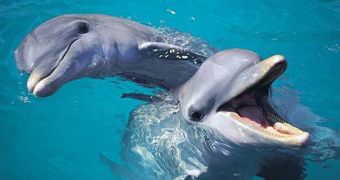Scientists working with the National Oceanic and Atmospheric Administration (NOAA, for short) say that a measles-like virus need be held accountable for hundreds of dolphin deaths that have been reported in the US over the past few weeks.
Wildlife researchers explain that, since July 1 until present day, 333 bottlenose dolphins have stranded themselves along the US East Coast.
Many of these animals were underweight. Besides, they had both skin and mouth lesions.
Although dolphin strandings are a fairly common sight in this part of the US, wildlife researchers say that the number of bottlenose dolphin deaths reported over the past two months is more than twice what is considered to be the normal yearly average.
Hence the fact that, not very long ago, NOAA was left with no choice except label the situation as an “unusual mortality event,” Nature reports.
The same source informs us that, according to recent investigations, these dolphin strandings were due to the fact that the animals had become infected with a so-called cetacean morbillivirus.
This virus is related to the one responsible for cases on measles in humans, researchers explain.
For the time being, scientists are utterly clueless about how long this outbreak will last. Furthermore, they cannot say for sure whether or not the virus can infect other dolphin species.
A similar outbreak occurred back in 1987, wildlife researchers say. It lasted for 11 months in a row, and it killed so many animals that the country's high officials agreed to label waters off the US East Coast as “depleted” of dolphins.
“If indeed this plays out the way that die-off occurred, then we are looking at mortality being high and morbillivirus spreading southward – likely continuing through the spring of 2014,” researcher Teri Rowles explains.
Presently, scientists are trying to determine whether environmental pollution or something else is making bottlenose dolphins more vulnerable to the effects of this virus.

 14 DAY TRIAL //
14 DAY TRIAL //